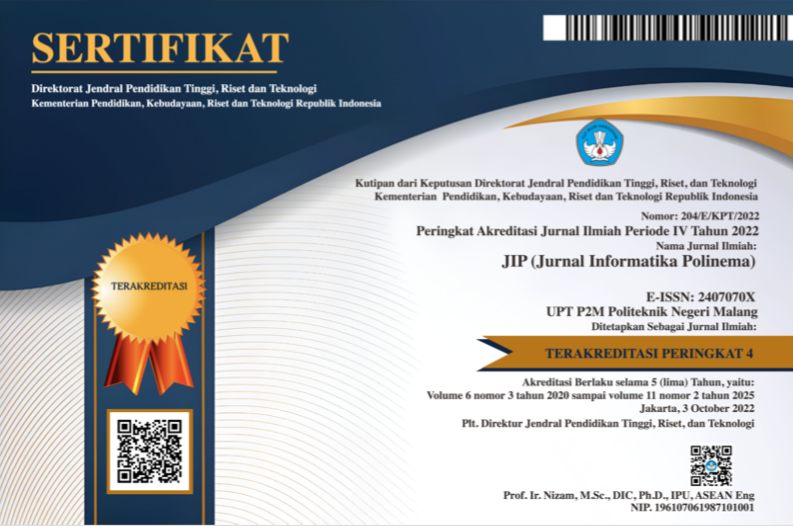Otomatisasi Peringkasan Teks Pada Dokumen Hukum Menggunakan Metode Latent Semantic Analysis
Abstract
At present, the number of crimes in Indonesia is quite large. The large number of crimes in Indonesia will have an impact on the number of legal documents that will be handled by law enforcement officials. In understanding legal documents, law enforcement officials such as lawyers, judges, and prosecutors must read the entire document which will take a long time. Therefore a summary is needed so that law enforcement officials can understand it more easily. So that one solution needed is to make a summary of the legal documents where the documents are in PDF form. In terms of summarizing the text, the method that can be used is the Latent Semantic Analysis algorithm. The algorithm is used to describe or analyze the hidden meaning of a language, code or other type of representation in order to obtain important information.
From testing the 10 documents summarized by experts, the results of precision, recall, f-measure and accuracy are obtained sequentially on automatic text summarization using the Latent Semantic Analysis method for a compression rate of 75%, namely 53%, 27%, 35% and 71%. for a compression rate of 50%, namely 54%, 56%, 55% and 75%, and for a compression rate of 25%, namely 51%, 79%, 61% and 75%. Based on the results of the research and testing that has been done, it can be concluded that the Latent Semantic Analysis Method can be used to summarize legal documents.
Downloads
References
Gupta, V., & Lehal, G. S. (2010). A Survey of Text Summarization Extractive. JOURNAL OF EMERGING TECHNOLOGIES IN WEB INTELLIGENCE, VOL. 2, NO. 3.
Hovy, E. (2005). Automated Text Summarization. Handbook of Computation Linguistics OxfordUniversityPress.
Mandar, G., & Gunawan. (2017). Peringkasan dokumen berita Bahasa Indonesia menggunakan Cross Latent Semantic Analysis. Jurnal Ilmiah Teknologi Sistem Informasi 3 (2) 94-104.
N, D., & K, G. J. (2015). Kannada text summarization using Latent Semantic Analysis. 2015 International Conference on Advances in Computing, Communications and Informatics (ICACCI).
Peter, R., & Kp, S. (2009). Evaluation of SVD and NMF Methods for Latent Semantic Analysis. International Journal of Recent Trends in Engineering ,Vol 1, No. 3.
Radev, D. R. (2002). Introduction to the special issue on summarization. Journal, 399-408.
Tinaliah, & Elizabeth, T. (2018). Perbandingan Hasil Deteksi Plagiarisme Dokumen dengan Metode Jaro-Winkler Distance dan Metode Latent Semantic Analysis. Jurnal Teknologi dan Sistem Komputer, 6(1).
Tokunaga, T., & Iwayama, M. (1994). Text Categorization based on Weighted Inverse Document Frequency. Tokyo, Japan: Tokyo Institute of Technology.
Copyright (c) 2021 Millenia Rusbandi, Imam Fahrur Rozi, Kadek Suarjuna Batubulan

This work is licensed under a Creative Commons Attribution-NonCommercial 4.0 International License.
Copyright for articles published in this journal is retained by the authors, with first publication rights granted to the journal. By virtue of their appearance in this open access journal, articles are free to use after initial publication under the International Creative Commons Attribution-NonCommercial 4.0 Creative Commons CC_BY_NC.
















